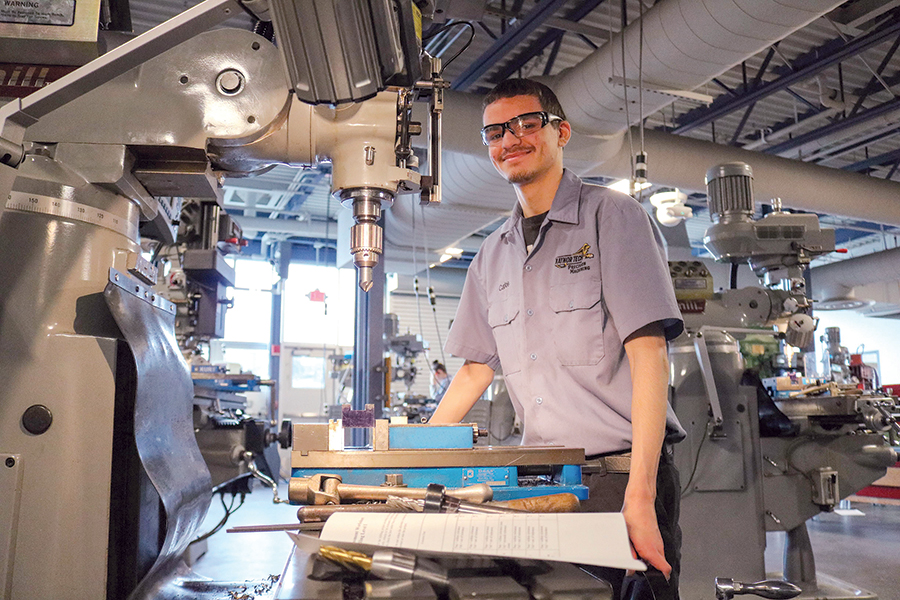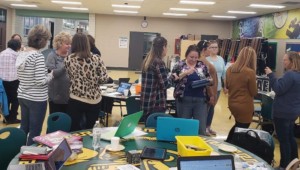Putting the Connect in Connecticut: Powerful Pathways to Employment from High School
Key Points
-
Students and CTE programs can, and should, work together on community projects.
-
Demand for trades will continue to grow in coming years with the rise of clean energy and increased infrastructure demand.

Regional initiatives are a critical part of creating durable New Pathways. When taking a regional approach, it becomes easier to incorporate larger-scale industry partners, develop highly intentional and robust support and guidance and also enable access to new funding models.
One great example of this, recently highlighted in the New Yorker, is Connecticut Technical Education and Career Systems (CTECS). CTECS is a state-run vocational education program that offers high-quality technical education to students in Connecticut. It was established in 1910 and has since grown to become one of the most comprehensive technical education programs in the United States. With a focus on providing students with hands-on training, CTECS has earned a reputation for producing highly skilled professionals who are in demand across a range of industries.
CTECS offers a wide range of technical education programs across 17 campuses in Connecticut. These programs include courses in areas such as advanced manufacturing, automotive technology, culinary arts, information technology, healthcare, and many more. The programs are designed to prepare students for careers in their chosen field, whether they are looking to enter the workforce immediately or continue their education at a higher level.
Curriculum Development
The CTECS curriculum is shaped by a number of key stakeholders, enabling it to stay relevant and robust amidst technological changes.
Certain projects, like the development of a sustainability-minded e-house, are being funded and driven by interested community partners like the Connecticut Green Bank. CTECS also hires and leverages trade experts at the district level, attending trade shows, etc. Beyond that, there are program advisory committees and input from the state department of labor, ensuring workforce needs are being met throughout the state.
Teaching within these programs also requires some specific life experience. Teachers within CTECS must have at least 8 years in the field and maintain their licenses so that they are able to work within the community. Upon being hired, they must also take a few college classes that are reimbursed by the state. The CTECS network does its best to match what these potential teachers were making in their previous industry.
When taking a regional approach, it becomes easier to incorporate larger-scale industry partners, develop highly intentional and robust support and guidance and also enables access to new funding models.
Mason Pashia
Community Connected Projects
Through this program, the students and the faculty co-run a business, The Student Workforce, that does real projects throughout the community. Aside from community members being able to bring their cars into the school for support from the young mechanics, members can apply online for the school to come do electrical, plumbing or other construction work on their house.
The school-run business will then vet the projects based on curriculum alignment and the size of the job. There is a maximum of 18 students per teacher for safety reasons and out-of-school projects must be able to utilize all 18 students. “The projects are meant to enhance learning and supplant budgetary restrictions,” said Brent McCartney, Architectural Construction trade consultant for CTECS who also oversees the Student Workforce. S “Teachers are selective with jobs to ensure the most diverse experience for students. This means some jobs are passed over to prevent redundancy.”.”
Once the project is done, the school is paid (usually about 1/5th the cost of a professional project). This revenue goes right back into the shops to help buy equipment, etc.
These students are also able to participate in a rigorous work-based learning program where they are able to leave school to work full or part-time jobs if they meet certain criteria.
In Conclusion
This program got off to a bit of a slow start, however, with the rising interest in trade-based professions, demand has surged in recent years. “For this next enrollment period, we got 7000 applications for our incoming class. That’s more than double the available seats,” said Kerry.
The next phase is the launching of a robust Career Center to better inform parents as well as students about the myriad work opportunities and to help industry partners more directly reach the students with news and announcements about project opportunities, event opportunities and more.
Across the country, there are skilled worker shortages and growing global challenges that will require reskilling and redoing infrastructure at a never before seen rate. One of the keys to addressing this shortage is to encourage more young people to consider a career in the trades. Many high school students are pushed towards traditional four-year college programs, even if they are not interested in pursuing a degree. However, CTECS offers an alternative path that can lead to a successful career without the need for a college degree. By providing students with a practical education that leads directly to a career, CTECS is helping to fill the skills gap in industries like electrical work.

Mason Pashia




0 Comments
Leave a Comment
Your email address will not be published. All fields are required.